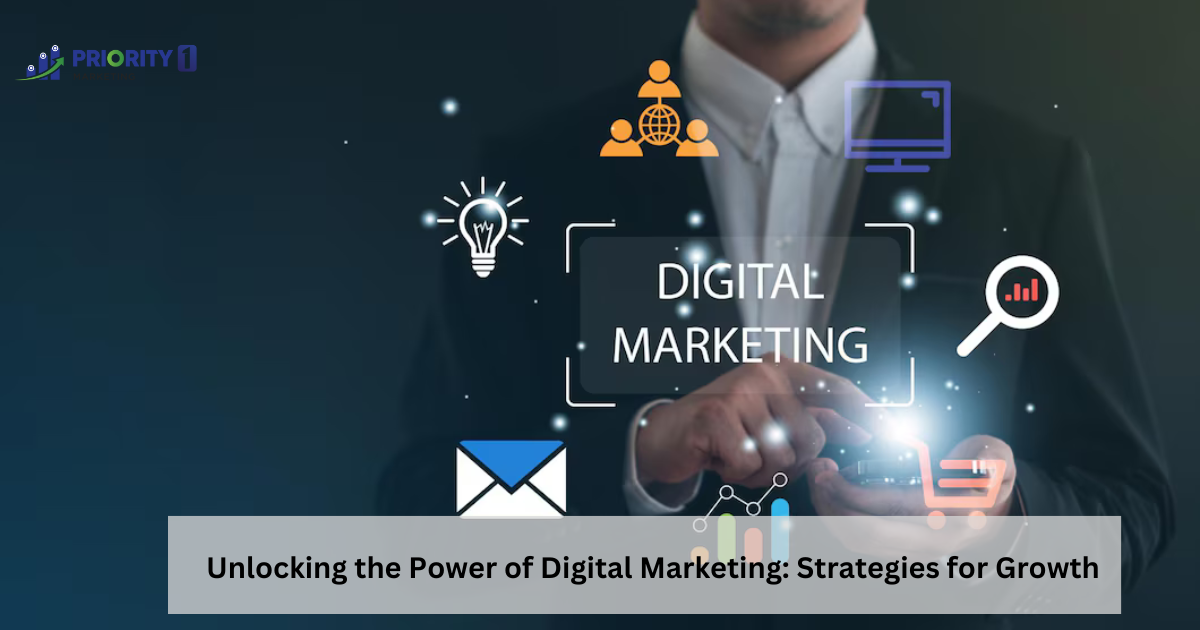In an era where technology drives nearly every aspect of our lives, digital marketing has emerged as the key to connecting with audiences and achieving growth. With its ability to reach specific demographics, foster engagement, and deliver measurable results, digital marketing has become indispensable for businesses, nonprofits, and organizations of all sizes.
Whether you’re navigating the world of digital marketing for small businesses or operating on a larger scale, the principles and strategies remain the same: create value, understand your audience, and leverage the tools available to make meaningful connections.
The Core Pillars of Digital Marketing
Digital marketing is not a one-size-fits-all solution. It consists of various elements that work together to achieve business goals. Let’s break down the core components that form the foundation of a strong digital marketing strategy.
Understanding Your Audience
The starting point of any digital marketing effort is understanding who your audience is. This means delving deep into demographics, behaviors, and preferences. If you’re crafting campaigns for NDIS digital marketing, for example, your focus might include individuals with disabilities and their support networks.
By tailoring messages to resonate with specific groups, businesses can build stronger connections. Tools like Google Analytics, surveys, and social media insights make it easier than ever to gain a comprehensive view of your audience.
Content: The Heart of Digital Marketing
Content drives the digital world. From blog posts and social media updates to videos and infographics, the type of content you create should align with your audience’s interests.
For small businesses, creating content that addresses the pain points of customers is critical. Imagine publishing a guide that explains effective digital marketing tips for first-time business owners—content like this builds authority and attracts a targeted audience.
To make content even more impactful:
- Use a conversational tone that resonates with readers.
- Incorporate visuals to enhance understanding.
- Answer frequently asked questions to provide real value.
Social Media: A Must-Have in Digital Marketing
Social media is no longer optional; it’s an essential component of digital marketing. Platforms like Facebook, Instagram, LinkedIn, and TikTok have become vital for businesses to connect with their audience.
Creating a Social Media Strategy
Start by identifying the platforms where your target audience is most active. For example, if you’re focused on NDIS digital marketing, Facebook groups and community pages may be the perfect place to promote your services.
Once you identify your platforms, focus on creating engaging content. Social media isn’t just a space to sell; it’s a space to build relationships. Share behind-the-scenes moments, highlight testimonials, and post informative content that adds value to your audience’s lives.
Search Engine Optimization (SEO): Driving Organic Traffic
SEO is the backbone of digital marketing, ensuring your content and website are discoverable to the right people. A well-optimized website increases visibility and attracts users who are actively searching for what you offer.
Why SEO Matters
Let’s say you’re running a campaign on digital marketing for small businesses. If someone searches for “how to promote a small business online,” your website should ideally appear on the first page of results. Achieving this involves optimizing your content with the right keywords, improving site speed, and earning backlinks from credible websites.
For businesses that partner with a digital marketing agency, the process becomes even more streamlined. Agencies bring expertise in keyword research, technical SEO, and link-building strategies, allowing businesses to focus on their core operations while professionals handle their digital presence.
Additionally, local SEO is critical for businesses targeting specific regions. If you’re running a service-based business, updating your Google My Business profile and optimizing for location-specific terms can drive significant results.
Paid Advertising: Accelerating Your Growth
While organic strategies like SEO and content marketing take time, paid advertising can fast-track your success. Platforms like Google Ads and Facebook Ads allow businesses to reach specific audiences with precision.
The Role of Paid Ads
For businesses using NDIS digital marketing, for example, Google Ads can be an excellent tool to target individuals searching for disability services. Paid ads provide measurable results and allow you to adjust campaigns in real time to improve performance.
Social media platforms like Instagram and LinkedIn also offer advanced targeting options. These platforms allow you to define your audience based on location, interests, and even behaviors, ensuring your ads reach the right people.
Email Marketing: A Timeless Tool for Engagement
Email marketing remains one of the most effective ways to nurture relationships with your audience. Despite the rise of social media and other channels, email continues to deliver a high return on investment.
Building a Strong Email List
A robust email list is an asset for any business. To grow your list, offer incentives such as free guides, discounts, or exclusive access to content. For instance, if you’re sharing effective digital marketing tips, create a downloadable eBook to attract subscribers.
Personalization Matters
Gone are the days of generic emails. By using email marketing tools, you can personalize campaigns to address your subscribers by name, reference their past interactions, and offer tailored recommendations.
Emerging Trends in Digital Marketing
Digital marketing is constantly evolving, with new trends and technologies reshaping how businesses connect with their audience. Staying ahead of these trends ensures your strategy remains effective and competitive.
The Rise of Video Marketing
Video content is dominating the digital landscape. Platforms like YouTube, TikTok, and Instagram Reels have become key players in digital marketing. For small businesses, creating short, engaging videos can significantly boost visibility and engagement.
AI-Powered Marketing Tools
Artificial intelligence is transforming digital marketing by enabling automation, predictive analytics, and improved targeting. Tools powered by AI can help you manage campaigns, analyze data, and even create personalized recommendations for your audience.
How to Measure Your Digital Marketing Success

The success of digital marketing campaigns lies in tracking and analyzing results. Fortunately, a wide array of tools is available to measure performance.
Using Analytics Tools
Platforms like Google Analytics and social media insights provide valuable data on user behavior, engagement, and conversions. For instance, tracking the performance of a campaign designed for digital marketing for small businesses can highlight which strategies are working and where improvements are needed.
Key Metrics to Watch
- Traffic: Monitor how many people visit your site and which pages they view.
- Engagement: Measure likes, comments, and shares to gauge audience interest.
- Conversion Rate: Track how many users complete desired actions, such as making a purchase or signing up for a newsletter.
Conclusion
Digital marketing is a game-changer for businesses looking to grow and connect with their audience. Whether it’s creating engaging content, optimizing for search engines, or leveraging paid ads, there’s a wealth of opportunities to explore.
For businesses navigating NDIS digital marketing, the focus should be on building trust and offering valuable services to the community. Similarly, small businesses can achieve incredible results by staying consistent, creative, and open to innovation.
In the ever-evolving digital landscape, success belongs to those who are willing to adapt and embrace change. With the right strategy, tools, and mindset, your digital marketing efforts can unlock new levels of growth and engagement.
